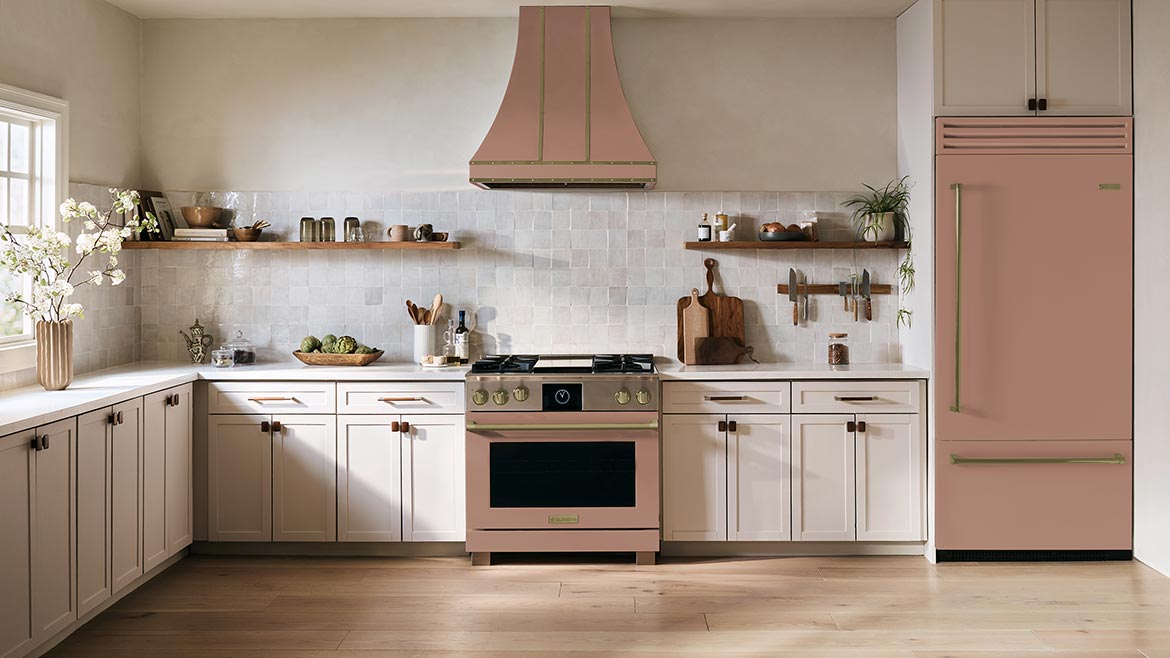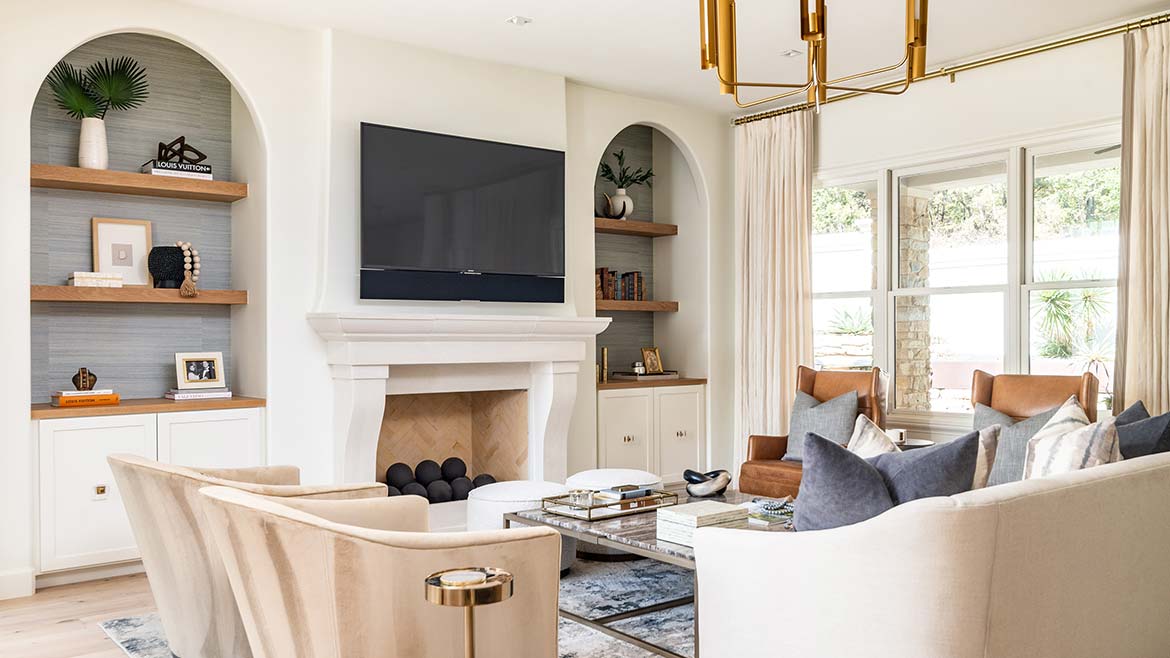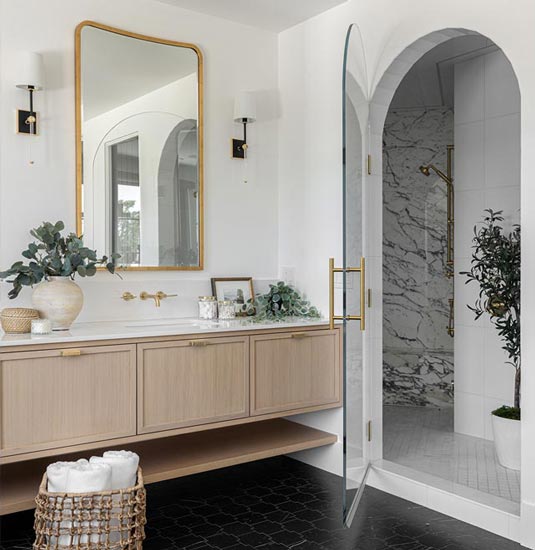2025 Home Design Trends: Comfort Meets Character

An English-style kitchen by Sun Remodeling Specialists, Inc., as showcased on Houzz. Photo: Nova Soul Imagery.
As we look ahead to 2025, home design is taking a decisive turn toward warmth, personality, and lived-in luxury. From nature-inspired tones to curves, the coming year promises to transform how we think about our living spaces. Here's an in-depth look at the trends set to define home design in 2025.
Several distinct style movements will emerge in 2025, each offering unique interpretations of contemporary living. The quiet luxury aesthetic emphasizes understated elegance through impeccable details and quality materials. Western revival brings sophisticated rustic elements into modern spaces, while retro revisited thoughtfully incorporates design elements from various decades. The honest home movement combines minimalist principles with organic materials and biophilic design, creating spaces that feel both contemporary and connected to nature.
"This is really an evolution of minimalism,” said Natalia Smith, senior director of commercial design, HMTX. “We're moving away from that super clean, precise minimalism to more of a comfortable minimalism—a cozy minimalism."
Pantone's selection of Mocha Mousse as the 2025 Color of the Year reflects the broader shift toward warm, nurturing tones.

Home design is taking a decisive turn toward warmth. Photo: BlueStar
"Sophisticated and lush, yet at the same time an unpretentious classic, it extends our perceptions of browns from being humble and grounded to embrace aspirational and luxe,” said Leatrice Eiseman, executive director of the Pantone Color Institute.
This sophisticated brown is a foundation for a palette emphasizing earthy neutrals and natural materials. Cool whites and grays step aside for creamy whites and warm woods. Natural materials appear throughout homes in ceiling beams, trim, wall paneling, and cabinetry, adding architectural interest while creating inviting, comfortable spaces.
“Mocha Mousse is incredibly versatile, especially when paired with floors and layered accents like textured throws, sculptural vases, and rich leather sofas against crisp whites,” said Katerina Sokolava, creative director at shop-at-home retailer Empire Today. “Just steer clear of those ‘Tuscan kitchen’ vibes from the late ’90s – often referred to as ‘Boomer Brown.’ Instead, lean into the modern ‘Beige Mom’ aesthetic: think neutral, earthy tones that evoke calm and balance, offering a fresh, grounded alternative to the ubiquitous ‘Millennial Gray.’”
The minimalist era gives way to a celebration of color, texture and pattern in 2025. Design professionals report increasing requests for layered textured spaces that embrace bold colors and patterns. Gen X and Boomers will mix and match brilliantly bold patterns, eclectic prints and delightful textures in all colors of the rainbow. The inner child in everybody will escape to colorful new places in 2025.

A design by Nicole Forina featuring layers of color, pattern and texture, as showcased on Houzz. Photo: Andrew Frasz.
"It doesn't matter what year... we're going to add a little bit of art deco in here, but then we're going to add some eighties as well,” Smith said. “Don’t forget the seventies color and the velvet textures. It's all about mixing and matching."
This maximalist approach appears in woven and mesh cabinet fronts, textured bathroom vanities, and varied window treatments. The trend extends to furniture and accessories, creating rich, multi-dimensional spaces that engage the senses.
Flooring plays a crucial role in this textural renaissance, with plush carpeting and statement area rugs making a strong comeback. After years of smooth hardwood and sleek tile dominating interiors, homeowners are rediscovering the comfort and visual depth that soft flooring brings to a space. Layered area rugs – even atop wall-to-wall carpeting – add dimension and personality while defining zones within larger rooms. High-pile carpets, textured weaves, and patterned rugs are being used to create cozy, inviting spaces that literally feel good underfoot. On walls, we see a natural stone with bolder veining and ceramic tiles that add texture.
Functionality remains paramount in 2025 design, with a focus on creating spaces that work for modern living while addressing climate challenges. Designers balance aesthetic choices with practical needs, incorporating climate-resilient features and sustainable materials without compromising style. Personal expression takes precedence over following strict design rules, allowing homeowners to create spaces that truly reflect their lifestyles and preferences.
“A home is not just a checklist of practical features, it's a feeling,” said Amanda Pendleton, home trends expert at Zillow. “Homeowners and buyers today are looking to the past to create a sense of warmth, character and comfort in even the most high-tech environments."
Houzz reports that curves dominate the architectural landscape of 2025, softening the rigid geometries of recent years. This organic approach manifests in furniture choices – from bulbous sofas to circular coffee tables with cylindrical legs – and extends to structural elements like doorways and windows. Arched openings create graceful transitions between spaces, while curved walls and rounded corners contribute to a more fluid, natural feel. These softer forms aren't just aesthetic choices; they reflect a broader movement toward spaces that feel more welcoming and human centric.

Arched openings create graceful details in this project by Simply Home, as showcased on Houzz. Photo: Toby Davies Photography
“The resurgence of curves and rounded forms in architecture and cabinetry is exciting to see and will be here to stay for some time,” said Richard T. Anuszkiewicz, interior designer and creative director for Monogram.
The kitchen of 2025 marks a decisive shift from the clinical all-white aesthetic toward a more soulful English-inspired design. Natural materials take center stage, with soapstone and butcher's block countertops replacing sterile surfaces.
“Customization and combining unique materials are key to creating tailor-made designs, but today’s homeowners want to go bolder,” Anuszkiewicz said. “Exotic stone patterns, mixed media, and unorthodox color combinations will be all the rage in 2025.”
Rich wood tones and historical paint colors, particularly moody blues and deep greens, create spaces that feel evolved rather than installed. The range alcove emerges as a defining feature, serving both as a practical cooking space and an architectural focal point that anchors the entire room. These kitchens embrace a lived-in luxury that prioritizes comfort and functionality while maintaining a sophisticated edge.

A shower room by DLC Builders Inc., as showcased on Houzz. Photo: Tyler Hogan.
Bathrooms in 2025 evolve beyond mere functional spaces into personal wellness retreats, according to Houzz. The shower room concept gains prominence, offering fully enclosed spaces complete with steam functions, aromatherapy, and chromotherapy features. Wet rooms emerge as a smart solution for smaller spaces, combining shower and tub areas in a seamless, spa-like environment. These innovations prioritize both luxury and practicality, creating intimate spaces that promote relaxation and rejuvenation while maximizing available space.
As we look beyond 2025, the integration of technology with traditional design elements continues to evolve. Sustainability becomes increasingly central to design decisions, while personal comfort and well-being remain primary considerations. The definition of luxury shifts from conspicuous consumption to thoughtful, personalized design choices that prioritize quality, durability, and environmental responsibility. This evolution suggests a future where homes are not just beautiful but also more resilient, sustainable, and nurturing.
"With all the turmoil in the world still, we still have this desire to feel very comforted at home,” Smith added.
Looking for a reprint of this article?
From high-res PDFs to custom plaques, order your copy today!





.jpg?height=200&t=1743420521&width=200)

